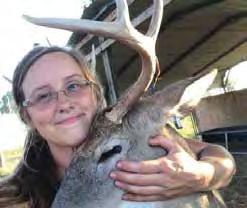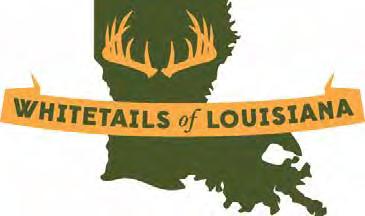
2 minute read
The Science of Raising Typical Deer
from LA Winter 2021
by DandKDesign

By: Gail Veley • Sponsored by IDEFA
There’s something to be said for the look of a classic typical frame, according to Josie Borkholder of Lone Pine Whitetails in Nappanee, Indiana. Through his years of deer farming, he’s seen the efforts to produce typicals pay off with the likes of Storm Express and Thermal Image, both of whom sport clean, sizable and typical frames. Perhaps he caught “typical” fever from his father Eddie Ray Borkholder. Nonetheless, while raising “inches” became a trend in the deer industry in the early 2000’s, raising typicals is receiving renewed attention today.
However, it takes more than an impressive typical buck in order to produce other impressive typical bucks. “The secret is to find those dams that have clean sides who throw typical deer and breed to them,” said Nelson Miller of Antler Ridge Whitetails in New Paris, Indiana. “I’d say good mothers are 65 to 70% of the secret to being successful.” While Miller realizes raising non-typicals may produce a faster end-goal, he, like Borkholder, is aiming to be among those farmers known for raising clean, typical lines. And, he’s willing to be patient.
“You’ve got to stay consistent with your breeding program,” Miller, 45, emphasized. “Some guys want the next greatest thing. But you need to stay patient and don’t sell out. You can’t always switch it up. If you can grow typical deer people will start paying attention. A while back you couldn’t find a nice typical. They were getting phased out.” While non-typical frames may grow more quickly, they can become too heavy, run a greater risk of infection and at times, cause the inability of the deer to carry the larger mass leading to the need to constantly trim antlers, Miller explained.
Yet, a little non-typical blood introduced into a typical line is very useful and can help perpetuate a typical frame that grows in a more-timely manner, Borkholder, 29, added. “You can’t just breed typical on top of typical on top of typical,” he said. “They won’t mature fast enough or be large enough to sell at two.” Instead, aim to make your breeding consist of approximately 25% non-typical genetics and 75% typical genetics and thoughtfully infuse them into your breeding program through appropriate proven dams. Keep in mind though “if they have a 15-20% nontypical frame then they won’t make the typical look,” he explained. Helping Borkholder to make his breeding decisions is the G.M.S. (Game Management Solutions) software program available through NADeFA. Using the G.M.S. software, breeders such as Borkholder can study the pedigrees of any deer and plan out their strategies. And while “line-breeding” can have it’s advantages “you need to be really careful,” Borkholder said. “You could end up with something like a blind deer.” Miller agrees that fresh bloodlines offer another key ingredient to successful breeding, as well as believing in yourself, and your ability to eventually own a typical buck that everyone talks about. “I’ve got one now I’m really happy with,” he said. “Knock on wood, so far he’s produced really nice sons and daughters.”
Storm Express @ 7 Lastly, keep your eye focused on the end result, Borkholder advises. “Remember you want that ‘certain cross.’ It’s so easy to get off track year after year and then get persuaded to go another direction. But in raising typicals, you are striving to create something everyone else doesn’t already have,” he said. “Be true to the desire of your heart.”






